#klotild
Explore tagged Tumblr posts
Text

1897 Philip de László - Clotilde "Klotild" Apponyi de Nagy-Aponyi, née Countess Wilhelmine von Mensdorff-Pouilly-Dietrichstein
(Private collection)
137 notes
·
View notes
Text

Ferenciek Square (then Felszabadulás Square) viewed from the Klotild palace, 1976. From the Budapest Municipal Photography Company archive.
57 notes
·
View notes
Text
“Klotilde Roe” (Hungary 1968)
“Klotilde” was one of 34 pregnant people in a Hungarian study who were killed by legal abortion. Among these, sepsis and/or peritonitis as a category was one of the most common recorded causes of death. (Given that the cause of death was not given for some fatalities in the study, it is unknown how many more died the same way she did.)
Unless otherwise specified, the abortions in the study were almost always done in the first trimester. They were carried out in hospitals and most clients were observed until the day following the abortion to watch for any complications.
In 1968, Klotilde underwent her legal abortion in a hospital. The circumstances were described as “optimal conditions” in the study. However, it is important to note that abortion has inherent risks no matter how well-equipped the hospital is. All the expertise of “specialists who have acquired great experience and skill” would not be enough to stop her from developing sepsis and dying.
During the study period, more Hungarian women died of sepsis from legal abortion than from all causes of illegal abortion combined. While stringent regulations helped, allowing elective abortion at all enabled the deaths of women who were told that they were consenting to something “safe and legal.” It is also important to note that the difference in reported abortion mortality between 1931–1932 and from 1964–1972 (see American Journal of Public Health in June of 1976, page 571 for this comparison) had far more to do with medical innovations such as blood transfusions and antibiotics than with legalization status.
Even decades later, pregnant people still continue to suffer sepsis and die after legal abortion. These include Keisha Atkins, Alyona Dixon, Holly Patterson, Sarah Dunn, Gabrielle Ivy Felts, Hoa Thuy “Vivian” Tran, Allegra Roseberry, Maria Del Valle González López, Chanelle Bryant, Oriane Shevin, Sophie McCoy, Gail Wright, Christin Gilbert, Imari Lawson, Carolina Gutierrez, Angela Hall, Brenda Benton, Rhonda Rollinson, Michelle Madden, Semika Shaw, Linda Gayle Lovelace, Mary Ann Tennyson, Angela Reynolds, Debra Walton, Joyce Ortenzio, and many cases recorded in medical journals, adverse event databases and lawsuits worldwide.
#tw abortion#pre roe legal#pro life#unsafe yet legal#tw ab*rtion#unidentified victim#tw murder#abortion#abortion debate#death from legal abortion
2 notes
·
View notes
Text


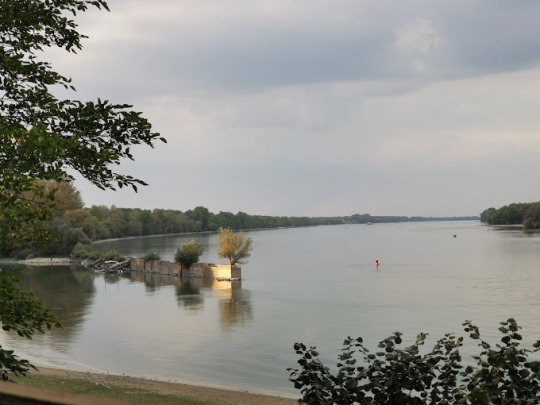



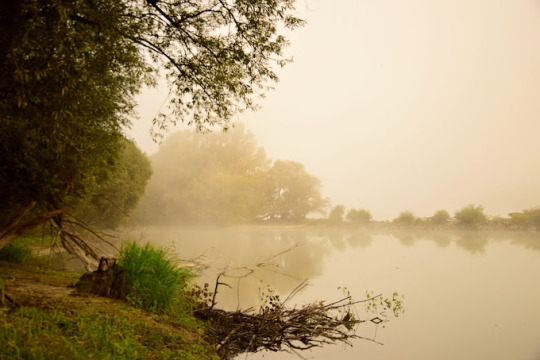

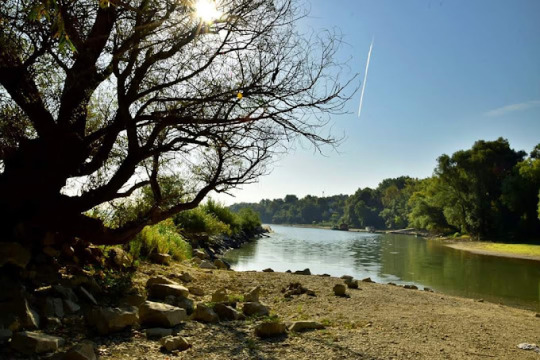

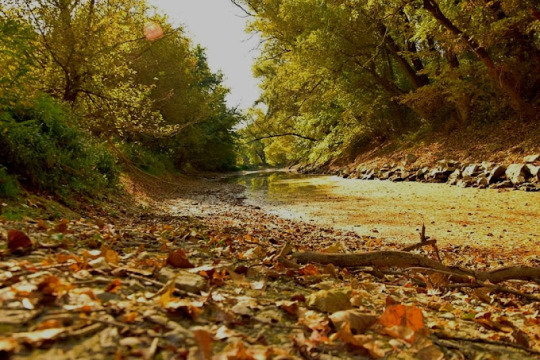
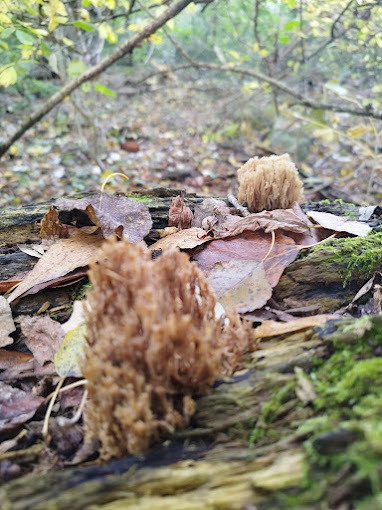

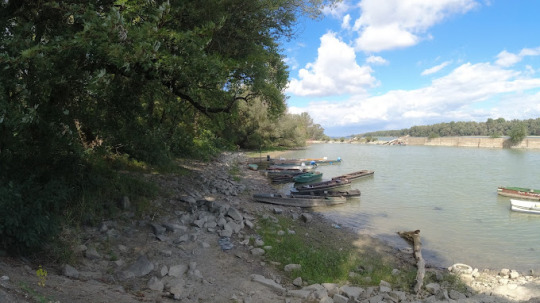

A kulcsi keszonok a Budapesten 1946-ban átadott Kossuth híd építése során használt beton süllyesztőszekrények (a pillérek alapozásához használták)
A híd bontásakor 1960-ban szükségtelenné váltak, így leúsztatták azokat a Dunán és Kulcs közelében használták fel a partvédőmű megépítéséhez. A híd vasszerkezetéből Kimlén és Feketeerdőn építettek hidat, illetve a szegedi Dóm téren a szabadtéri játékok nézőtere is ebből készült. Helyét az egykori pesti és budai hídfőnél emlékkő jelöli.
A második világháború befejeztével Budapesten nem maradt ép híd, pótlásukat visszaépítésükig kishajó-közlekedéssel és pontonhidak építésével próbálták megoldani, melyek azonban a folyó téli jégzajlása miatt nem tudták folyamatosan biztosítani a kapcsolatot. Az első állandó híd a Kossuth Lajosról elnevezett híd volt, mely 1946. augusztus 20-áig, a Szabadság híd megnyitásáig egyben az egyetlen is volt.
A híd helyének kiválasztásakor egyértelmű volt, hogy az állandó hidak közül leghamarabb a Ferenc József hídon tudják visszaállítani a forgalmat. Ezért a Margit híd és a Lánchíd között kerestek megfelelő területet. A Batthyányi tér–Báthory utca és a Pálffy tér (Bem tér)–Klotild utca (Stollár utca) közötti nyomvonalak között a kb. 100 méterrel rövidebb hossz döntött az előbbi javára.
A pillérek építése 1945. május 16-án indult, a hidat a gyalogos forgalom számára 1946. január 15-én, az autóforgalomnak január 18-án nyitották meg. A rekordgyorsaságú, mindössze nyolc hónapig tartó építkezés az újrakezdés szimbólumává tette a hidat.
A híd teherbírása korlátozott volt; egy idő után már nagyobb autóbuszok nem is hajthattak fel rá, végül már csak a gyalogosforgalom volt engedélyezett.
A hidat 10 éves élettartamra tervezték, ennek megfelelően elhasználódása miatt 1956-ban, mikor már nélkülözhetővé vált, forgalmon kívül helyezték, majd 1960-ban lebontották. A medertisztítási munkák 1963-ra fejeződtek be. A keszonoknak új felhasználást találtak, Kulcsnál partvédművekbe építették be őket. Helyét az egykori pesti és budai hídfőnél emlékkő jelöli.
#duna#dunapart#keszonok#kulcs#rácalmás#duna river#travel#hungary#eastern europe#hungarianhikers#discover_hungary#discoverhungary#explorehungary#travelhungary#túra#túrázás#faház#tinyhouse#falusiturizmus#hovamenjünk#egyediszállások
1 note
·
View note
Text
Zajnát hegyek körtúra, 10.4km 3 óra (+-1)
Fú ez geci jó kis körtúra volt. Könnyű, de azért van egy-két izzasztóbb, meredekebb szakasz felfelé és lefelé irányban. Dobj magadra rendes deót mielőtt nekivágsz, mert nagyon mocsok beizzadt testszaggal érsz vissza a betondzsungelbe, habár a 4-6 csöves szagában lehet elvegyülsz.
Ha a nagyfaluból tömegközlekedéssel indulnál akkor az Árpád híd volánbusz állomásnál felteszed magadat a 800 vagy a 815 jelzésű buszra és leszállsz a Kopár csárdánál. Ahogy leszállsz a buszról, szemben van a csárda. Besétálsz a csárda irányába és elindulsz jobb kéz felé aztán piros jelzésnél balra és zúzol felfele végig egyenesen. Valahol majd lesz egy geci nehezen észrevehető elágazás, ahol jobbra kell fordulni és egy kibaszott szép panorámát láthatunk ami a vörösvári medencére néz, meg a távolba lehet látni a Csobánka feletti mészkőszirteket meg a Kevélyeket, amit nem győzök ajánlani mindenkinek, mert telibe baszottul szép.
Na, de miután megcsodáltunk mindent, vissza kell menni a jelzett útra és nem faszkódni és térkép nézés nélkül sétálgatni, mert hamar elveszik az ember és sok energiát spórolsz, ha nem térsz le a körtúra kijelölt útról. Mi kicsit beszoptuk, mert baszkódott a jel a GPS appon és egy kibaszott jelzetlen meredek ösvényen haladtunk lefelé ami egyre parábban lett meredek. Ha nincs rajtad pro túracipő és közben még szendvicset is zabálsz, a hébe-hóba csúszkálások miatt könyenn félre tudod nyelni a kaját. Elég szürreális fulladásos halál lenne, de legalább egy szép helyen leheled ki az utolsókat. Amúgy itt tök szívesen meghalnék. Na mindegy.
Szóval amilyen meredek volt le, olyan meredek volt felfelé is, de rájöttünk, hogy futni kell és sokkal hamarabb túl vagyunk rajta, mint lihegve fulladozva lassan felszenvedni magunkat.
Visszatértünk a piros jelzésre amin haladva egy újabb lefelé meredek ösvény vár bennünket, amit egy gázvezeték jelzés keresztez. Innen is kibaszott szép panoráma látható.
Rövid idő múlva újabb elágazáshoz érünk amin egy kis fa építmény van. Eléggé fasz voltam, mert nem olvastam el rendesen a körtúra leírását és a sárga kocka jelzésen haladtunk, ami a Klotild ligeti vasútállomásra visz. Kurvára meglepődtem, hogy ilyen hamar vége a túrának és a vasútállomás közelében állva rájöttem, hogy valami nem fasza. Szóval vissza baszkódtuk magunkat a kis fa építményhez, ami eléggé szopó volt, mert most felfele kellett haladni a meredek ösvényen.
Szóval újratervezés. Ha a kis fa építménnyel szembe fordulva állunk jobbra fordulva be kell menni egy jelzetlen körséta útra (amúgy a faszért jelzetlen???) és ott fel-le kanyarogva megérkezünk a Sas-sziklához. Elég meredek oda lemenni, meg vissza, de ha nem egy kis belvárosi csoffadt emo fos vagy, akkor beadod.
Na itt már kurvára nem emlékszem hogy kell visszafordulni a jó útra, mert kezdtem lefehéredni, kicsit le esett a cukrom, de lényegében csak mész addig ameddig vissza nem érkezel a kis építményhez és csak ezután térsz rá a sárga kocka jelzésre, ami levisz a erre a fura nevű liget vasútállomására.






0 notes
Text








MAGYARORSZÁGON DEBÜTÁL A THE LUXURY COLLECTION - MEGNYÍLT A MATILD PALACE, A LUXURY COLLECTION HOTEL, BUDAPEST
Az újjászületett ikonikus budapesti palota fejedelmi luxust, egyedülálló történelmi és kulturális örökséget valamint páratlan gasztronómiai élményeket kínál a nemzetközi utazók és a helyi felfedezők számára.
A Marriott Bonvoy portfóliójába tartozó The Luxury Collection Hotels & Resorts bejelentette a Matild Palace, a Luxury Collection Hotel, Budapest hivatalos megnyitását. Az Özyer Group tulajdonában álló ikonikus palota megnyitásával debütál a The Luxury Collection brand Magyarországon. Az UNESCO világörökség részét képező, és Budapest egyik leglenyűgözőbb épületeként számon tartott Matild Palota minden részletre kiterjedő 5 éves átalakuláson esett át, hogy most 130 szobás luxusszállodaként köszöntse leendő vendégeit.
Az építészeti terveket a budapesti Dajka Péter és Puhl Antal építészek álmodták meg, a palota belső tereinek lélegzetelállító kialakítása pedig az MKV Design alapítója, Maria Vafiadis díjnyertes tervező munkájának gyümölcse. A pár lépésnyire a Dunától található palota impozáns terei és különleges belső esztétikája az ikonikus épület magyar történelmi örökségét ünnepli, reflektálva a szálloda figyelemreméltó elhelyezkedésére Budapest szívében. A különleges dizájn a híres épület gazdag történelme előtt tiszteleg, amely egykoron Budapest városának felkapott társasági központjaként szolgált, míg most modern és elegáns légkört teremtve a helyi és nemzetközi felfedezők számára kínál felejthetetlen élményeket.
„Nagy izgalommal várjuk a Matild Palota megnyitását, amely egyben a The Luxury Collection márka bővülésének egy mérföldköve és amely meghatározó desztinációvá emeli Budapestet” - mondta Candice D’Cruz, a Marriott International Luxury Brands európai, közel-keleti és afrikai területekért felelős alelnöke. „Az épület lehetőséget teremt a vendégeinknek, hogy egy fejdelmi palotában lakva élvezhessék a modern kényelmet és a kifogástalan kiszolgálást. Nagy örömmel várjuk őket, hogy felfedezhessék Budapest időtlen és inspiráló városát."
Egy ikon visszatér
A történelmi hangulat által átjárt Matild Palota 120 évvel ezelőtt, a Boldog Békeidők korszakában épült Klotild Mária szász-koburgi és gothai főhercegné védnöksége alatt, hogy Budapest társasági életének közkedvelt helyszíneként szolgáljon. A Matild Palota a Főhercegné által megálmodott gyönyörű palotapár egyike, amely az Erzsébet híd kapujaként tündökölt a hídról a pesti Belvárosba érkezők előtt.
Az ínyencek úti célja Wolfgang Puck által
A Matild Palota Wolfgang Puck irányítása alatt álló vendéglátó egységei a szórakozás és a gasztronómia új korszakát hozzák el Budapestre. A sztárséf most megnyíló világhírű Spago by Wolfgang Puck étterme a Beverly Hills-i gasztronómia magyarországi debütálása. Az étlap a hagyományos magyar konyha remekeit vonultatja fel, korszerű, a régióban elérhető alapanyagok által ihletett recepteken keresztül.
A világhírű séf felügyeli a jövő hónapban nyíló The Duchess névre keresztelt rooftop bár, valamint a szeptemberben megnyíló Matild Café & Cabaret gasztronómiai kínálatát, amely a Boldog Békeidőkben a társasági élet kedvelt színtereként szolgált, mint Belvárosi Kávéház.
A Spago Budapest és a Matild Café & Cabaret az év minden napján elérhető terasszal várja a gasztronómia szerelmeseit, a város első gasztro sétányán.
Signature vendégszobák és Signature lakosztályok
A Matild Palota vendégei 111 elegánsan berendezett signature szoba és 19 lakosztály közül választhatnak, amelyek többsége gyönyörű kilátást biztosít Budapest városára és a Dunára. A szálloda 4 vendégszoba-kategóriát kínál, amelyek mindegyike a Főhercegné érdeklődési köréből, életstílusából és a 20. század eleji Budapestből merített ihletet. A legtöbb vendégszoba belmagassága meghaladja a 4 métert is. A szobákat - a magyar kultúra előtt fejet hajtva - finoman kidolgozott, kézműves, népi motívumokkal díszített fejvégek, tradicionális magyar, halszálka mintás parketta és Magyarország hagyományos termálfürdőit idéző, spa-stílusú fürdőszobák ékesítik. Az egész épületben felbukkannak a türkiz, az arany és a réz árnyalatok, melyek átgondolt palettája Budapest ikonikus épületeinek valamint jellegzetes házetőinek színárnyalatait tükrözik vissza. A szálloda számos egybenyitható szobát is kínál a több generációt felölelő családi kalandokhoz.
Igazán egyedülálló élményt kínálnak a palota tetőterében található Loft vendégszobák, amelyek végtelen kilátást nyújtanak Budapest városára és a Dunára a hatalmas, lejtett ablakokon keresztül. A kortárs modern dizájn, valamint a színes vintage bútorok és műalkotások eklektikus elegye a művészek látásmódját eleveníti fel, tisztelegve a Főhercegné művész barátai előtt, akik gyakorta tették tiszteletüket az impozáns palotában.
A Matild Palota ékköve az ötödik emeleten található háromszintes Crown Tower Suite, amely saját, 48 méteres tornyával egyedülálló Magyarországon. A toronyból lélegzetelállító, 360 fokos panoráma nyílik az egész városra. A páratlan Maria Klotid Royal Suite kialakítása újabb szintre emeli a fejedelmi eleganciát. A lakosztály a Főhercegné privát apartmanját idézi meg tágas hálószobájával, fürdőszobájával, nappalijával és külön dolgozószobájával, valamint elegáns csillárjaival és kézzel készített üvegmozaikjaival.
Wellness és pihenés
A Matild Palota Swan Spa részlege a magyar fürdők világát és élményeit idézi meg, hagyományos termálvizes kezeléseivel és Hammam rituáléival ébresztve fel az érzékeket. A sókamrával és a gőzkabinnal is ellátott SPA részleg kizárólag ESPA termékeket használ a kezelésekhez. Az aktív kikapcsolódást keresőket teljesen felszerelt, modern edzőterem várja.
Különleges tárgyalók és rendezvényhelyszínek
A Matild Palota egyedi belső terei tökéletes helyszínként szolgálnak a különleges alkalmakhoz és üzleti találkozókhoz. A különböző események emlékezetessé tételét a hotel szakértő rendezvényszervezői, Wolfgang Puck gasztronómiai irányítása és a legkorszerűbb audio-vizuális technológiai megoldások garantálják.
Matild Palace, a Luxury Collection Hotel, Budapest
A Matild Palace, a Luxury Collection Hotel, Budapest csatlakozott a Marriott Bonvoy ünnepelt márkájának, a The Luxury Collection portfóliójához. A Klotild Mária szász-koburgi és gothai főhercegné megbízásából épült palota az épület egészét átjáró magyar örökség jellegzetes hangulatát tükrözi vissza. Az épület évekig tartó műemléki felújításon esett át, majd a díjnyertes MKV Design tervei mentén született újjá, amely a palota történelmi narratíváját megőrizve, a magával ragadó, kortárs stílus előtt tiszteleg. A szálloda elkötelezett amellett, hogy gazdag történelmével, kulturális örökségével és különleges szolgáltatásaival inspirálja a vendégeket. Az UNESCO világörökség részét képező ikonikus palota 111 vendégszobával és 19 lakosztállyal várja a vendégeket. A szállodát kiegészíti egy exkluzív tetőtéri italbár, ahonnan pazar kilátás nyílik a városra, egy magyar termálfürdők ihlette spa részleg, valamint három egyedi gasztronómiai koncepció, amelyeket a világhírű séffel, Wolfgang Puck-kal kötött partnerségi megállapodás hozott el Budapestre. A Budapest szívében, a Dunától mindössze egy kőhajításnyira található Matild Palota a fényűző környezetet autentikus élményekkel ötvözi, és a főváros felfedezésének leglátványosabb helyszíneként szolgál. További információkért látogasson el a www.matildpalace.com weboldalra.
(sajtóközlemény)
21 notes
·
View notes
Photo

Budapest
#blackandwhite#budapest#city#matild#klotild#analog photography#35 mm film#35 mm#ricoh#budapest city#architecture#analog#film photography#photography#ferenciek tere#klotild palota#Eclecticism#eklektika
52 notes
·
View notes
Photo

12 notes
·
View notes
Photo

Walking around Budapest, it’s always exciting to imagine the city as it was in its heyday in the late 19th century. For many years, the Matild Palace, guarding the entrance to Elizabeth Bridge with its twin sister, the Klotild, was caked in grime. More recently, it has been festooned in planks and scaffolding, as a painstaking renovation unfolded. Now the Matild Palace is not only a five-star hotel in the Marriott Luxury Collection series but a restaurant, cabaret and sky bar. The atmosphere and image of Pest in the late 1800s were completely changed by the construction of Elizabeth Bridge, and many buildings were demolished. Of the plots left vacant in the 1880s, the two most valuable were bought by the wife of Archduke Joseph Karl, Princess Clotilde, who envisaged elegant palaces standing at the gates of the future bridge. With this in mind, the commission was given to two young, talented architects of the day who had already shown their advance thinking in the design of the New York Palace.The eclectic Klotild and Matild Palaces, which rise like a graceful princess on either side of the road, were designed by Flóris Korb and Kálmán Giergl, the same duo later behind Franz Liszt Music Academy. The most famous craftsmen of the period also worked on the building, namely the renowned trinity of Zsolnay, Gyula Jungfer and Miksa Róth, masters of ceramics, wrought iron and stained glass respectively.The architects quickly built the two mirror-symmetrical palaces in three years, a major feat, especially because they were experimenting with the novelty of an iron structure, The building was so innovative, in fact, that lifts were installed for the first time in Budapest.Business premises, associations and companies were located on the ground floor and mezzanine level of the southern palace, while rented apartments were located on the upper floors. The 48-metre-high corner towers were immediately distinctive. The Habsburgs had three Mathildes: a medieval Bavarian princess, another who set herself alight with a cigarette at the age of 19, and the ninth child of Buda-born Marie Valerie, but there is no evidence that they named the southern building because of any specific one of them.
6 notes
·
View notes
Photo




ONOTO SERVICE V. Kígyó utca 5.
ép. Vince (1945-is Weiss) Pál (1909-1994), 1932
A Tér és Forma (IX. évf. 8. sz., 1936) vonatkozó száma ennyit ír a fotó alá: "Onoto fotóüzlet. Tervezte: Weiss Pál. Márványüveg burkolat: Fischer Testvérek."
Ez így leírva egészen jól is hangzik, de a kirakatot látva finom kételyeim támadtak, ugyanis egyáltalán nem feltételeztem, hogy egy fotóbolt így nézhetett volna ki. A gyanút a Magyarság című folyóirat (1932. szeptember 25.) erősítette meg: az üzlet megnyitásáról hírt adó cikk (ld. a mellékelt képen) szerint ez ugyanis Kelen S. boltja volt, aki Pesten egyedüliként árusított kifogástalanul lezárható töltőtollat, aminek neve megegyezett az üzletével.
Csakhamar kiderült, hogy ez egy 1905-en született brit luxusmárka, amelynek a nagy gazdasági világválság éveiben egyre stílusosabbá, színesebbé és finomabbá váló tollait termékeit az 1958-as megszűnésig olyan ismert személyiségek is megvásárolták, mint az író Edgar Wallace, vagy épp Winston Churchill. Az Onoto 2005-ben, az előd születésének századik évfordulóján újból a piacra lépett (az oldalukat itt találjátok meg: https://cutt.ly/YtSuFeO), és évente egy-három új modelt mutatnak be. Az árak a barátságos 175 ezer forintról indulnak, és másznak fel a csillagos égig.
Na de ne kanyarodjunk el ennyire messzire, hanem inkább ugorjunk vissza a Kígyó utcába, kiderült ugyanis, hogy az üzlet olyan helyen állt, ahol egyáltalán nem számítottam rá: a Klotild paloták (ép. Korb Flóris és Giergl Kálmán, 1899-1902) északi épületében, ahol tavalyig az illegális pénzváltókból kétes körülmények közt milliárdossá lett jordán páros Buddha-Bar Hotele működött. A régi üzletportálsornak ma már semmi nyoma, hiszen az ikerépületek eredeti állapotra való visszaállítása 1968-ban megtörtént, úgyhogy gondolom, legkésőbb akkor kiradírozták az átadás óta eltelt hat évtizedben történt földszinti változásokat.
A portál tervezőjéről egy korábbi posztban már meséltem nektek, de legyen meg itt újra: Weiss (1909-1994) 1932-ben lépett ki építészdiplomájával a düsseldorfi Kunstakademie kapuján, a két világháború közt azonban inkább bútortervezőként, belsőépítészként, illetve üzletportálok tervezésével vált ismertté – annak ellenére, hogy számos nagy építész irodájában megfordult, mint rajzoló, sőt, tervpályázatok egész során is bizonyította a tehetségét. Budapest ostroma után előbb a helyreállításban vállalt fontos szerepet, a szocializmus első két évtizedében (1969-ben való nyugdíjazásáig) azonban több állami tervezőintézetben is megfordult. Munkái közül kiemelkedik a Jókai utca eleji volt KPVDSZ-székház (VI. Jókai utca 6. - Ó utca 50., Gyárfás Ivánnal, 1948-1949) a miskolci Herman Ottó Múzeum (egykor Megyei Pártház, 1952), a miskolci és mályi téglagyár, illetve a II. János Pál pápa téri volt Magyar Dolgozók Pártja-székház (Körner Józseffel, 1956).
6 notes
·
View notes
Photo

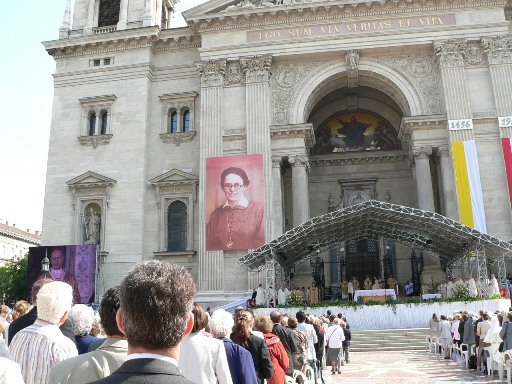
Second Saint of the Day – 27 December – Blessed Sára Salkaházi S.S.S. (1899–1944) Martyr, Religious Sister of The Sisters of Social Service, Teacher, bookbinder, milliner, journalist – born as Schalkház Sarolta Klotild on 11 May 1899 in Kassa, Hungary (modern Košice, Slovakia) and died by being shot on 27 December 1944. Sára was a Hungarian Catholic religious sister who saved the lives of Jews during World War II. Denounced and summarily executed by the pro-Nazi Arrow Cross Party, Blessed Sara was Beatified on 17 September 2006 by Pope Benedict XVI. Recognition of the Beatification was celebrated at Budapest, Hungary by Cardinal Peter Erdo. Blessed Sára was the first non-aristocrat Hungarian to be beatified.
Teacher, bookbinder, milliner, journalist – this was the resume of Sára Salkaházi when she applied to join the Sisters of Social Service, a Hungarian religious society that today is also active in the United States, Canada, Mexico, Taiwan and the Philippines. The Sisters of that new congregation, founded in 1923 by Margit Slachta and devoted to charitable, social and women’s causes, were reluctant to accept this chain-smoking, successful woman journalist and she was at first turned away from their Motherhouse in Budapest. But 16 years later, she became the Society’s first Martyr, at the hands of the Nazis.
Fun-loving and intelligent, Sára was born into a well-to-do family at Kassa-Kosice, Upper Hungary, now Slovak territory, on 11 May 1899. She studied to become a teacher. In the classroom, she learned through her students about the social problems of the poor, which she publicised via newspaper articles. To widen her horizon and experience first-hand what discrimination meant, Sára became a bookbinder’s apprentice, where she was given the hardest and dirtiest work. She learned that trade, then went to work in a millinery shop, all the while continuing to write articles for newspapers. She became a member of the Christian Socialist Party and then worked as editor of that party’s newspaper, focusing on women’s social problems.
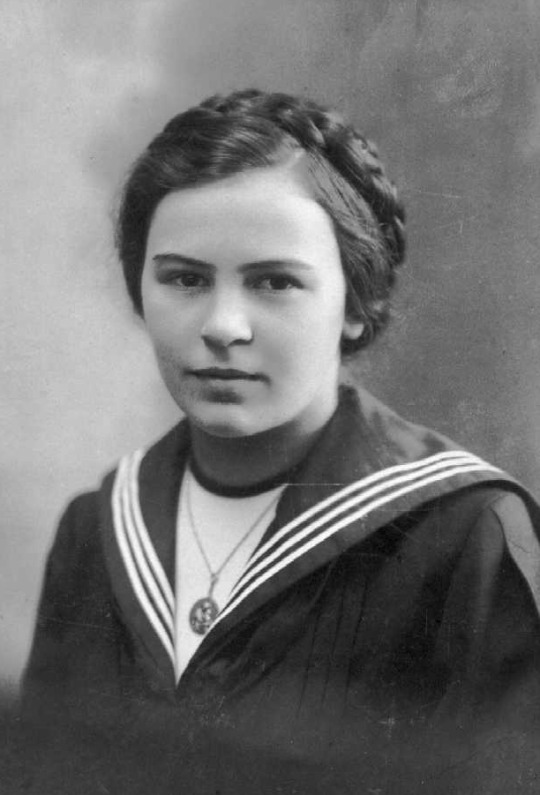
After she had come into contact with the Sisters of Social Service, Sára felt a strong call to join them. Following her initial rebuff, she quit smoking – with great difficulty – and was admitted to the Society at age 30, in 1929. She chose as her motto Isaiah’s “Here I am! Send me!” (Is 6: 8b). Her first assignment was to her native Kassa (which at the end of World War I had been incorporated into Czechoslovakia) to organise the work of Catholic Charities; subsequently, she was sent to Komarom, for the same task . In addition, she wrote, edited and published a Catholic women’s journal, managed a religious bookstore, supervised a shelter for the poor and taught. The Bishops of Slovakia then entrusted her with the organization of the National Girls’ Movement. She thus began giving leadership courses and publishing manuals.
In one year alone, she received 15 different assignments, from cooking to teaching at the Social Training Centre, all of which exhausted her physically and spiritually. When several novices left the Society, Sára also considered leaving, especially since her superiors would not allow her to renew her temporary vows (she was deemed “unworthy”), nor permit her to wear the habit for a year. These decisions hurt her deeply. But Sára accepted these hardships and made up her mind to remain faithful to her calling for the sake of the One who called her. Her faithfulness paid off as she received permission to renew her vows some time later.
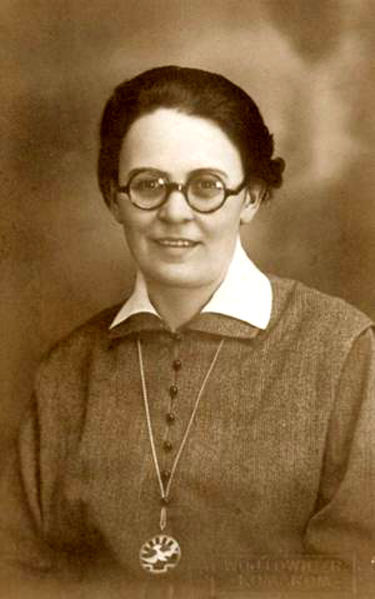
She wanted to go to the missions, to China or Brazil but the outbreak of World War II made it impossible to leave the country. She worked instead as a social lecturer and administrator in Upper Hungary and Sub-Carpathia (which had also been part of Hungary until the end of World War l) and took her final vows in 1940.
As national director of the Catholic Working Girls’ Movement, Sister Sára built the first Hungarian college for working women, near Lake Balaton. In Budapest, she opened Homes for working girls and organised training courses. To protest the rising Nazi ideology Sister Sára changed her last name to the more Hungarian-sounding “Salkaházi”. As the Hungarian Nazi Party gained strength and also began to persecute the Jews, the Sisters of Social Service provided safe havens. Sister Sára opened the Working Girls’ Homes to them where, even in the most stressful situations, she managed to cheer up the anxious and discouraged.
As if her days were not busy enough, she managed to write a play on the life of St Margaret of Hungary, canonised on 19 November 1943. The first performance, in March 1944, was also the last, since German troops occupied Hungary that very day and immediately suppressed this religious production.
The life of St Margaret may have provided the inspiration for Sister Sára to offer herself as a victim-soul for the safety and protection of her fellow-Sisters of Social Service. For this, she needed the permission of her superiors, which was eventually granted. At the time, they alone knew about her self-offering.
Meanwhile, she kept hiding additional groups of refugees in the various Girls’ Homes, under increasingly dangerous circumstances. Providing them with food and supplies became more and more complicated every day, given the system of ration cards and the frequent air raids. Nevertheless, Sister Sára herself is credited with the saving of 100 Jewish lives and her Community, with saving 1,000.
The Russian siege of Budapest began on Christmas 1944. On the morning of 27 December, Sister Sára still delivered a meditation to her fellow-Sisters. Her topic? Martyrdom! For her, it would become a reality that very day. Before noon, Sister Sára and another Sister were returning on foot from a visit to another Girls’ Home. They could already see in the distance, armed Nazis standing in front of the house. Sister Sára had time to get away but she decided that, being the director, her place was at this Home. Upon entering the house, she too was accompanied down into the air raid shelter where the Nazis were already checking the papers of the 150 residents. About 10 of them were refugees with false papers. Some were declared suspicious and were to be taken to the ghetto, while those in charge would have to “give statements at Nazi headquarters before being released”. As she was led out, Sister Sára managed to step into the chapel and quickly genuflected before the altar but her captors dragged her away. One of the Nazis suggested, “Why don’t we finish them off here in the yard?”. But another gestured, “No”.
That night, a group of people was driven by agents of the pro-Nazi Arrow Cross regime to the Danube Embankment. Sister Sára was among them. As they were lined up, she knelt and made the Sign of the Cross before a bullet mowed her down. Her stripped corpse and those of her companions were thrown into the river.

The other Sisters anxiously awaited Sister Sára’s return. A youngster from the neighbourhood brought them news of the shooting the following day. It seems that the Lord had accepted Sister Sára’s sacrifice, because none of the other Sisters of her Community was harmed.
Every year, on 27 December, the anniversary of her martyrdom, the Sisters of Social Service hold a candlelight memorial service on the Danube Embankment for Sister Sára Salkaházi. The voluntary offering of their first martyr saved not only many persecuted Jews but also her Religious Community….Vatican.va
Speaking at the Beatification Mass, Rabbi József Schweitzer said of Sister Sára, “I know from personal experience … how dangerous and heroic it was in those times to help Jews and save them from death. Originating in her faith, she kept the commandment of love until death.”
Peter Cardinal Erdo, the Archbishop of Budapest, read a proclamation from Pope Benedict XVI beatifying Sister Sara.
The proclamation said, “She was willing to assume risks for the persecuted…in days of great fear. Her martyrdom is still topical… and presents the foundations for our humanity.”
For the Lord, all things are possible. Trust Him to the end!
“Here I am! Send me!” (Is 6: 8b)
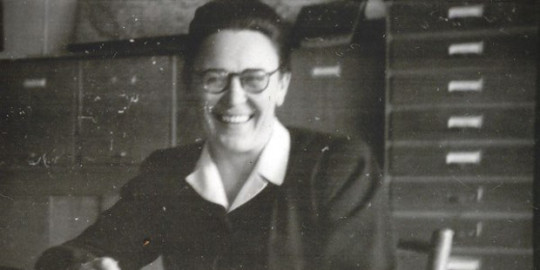
(via Saint of the Day - 27 December - Blessed Sára Salkaházi S.S.S. (1899–1944) Martyr - A Catholic Gem)
14 notes
·
View notes
Text
1 ÉVES ÉVFORDULÓJÁT ÜNNEPLI A BUDAPESTI MATILD PALOTA
Budapest ikonikus helyszíne a 2021-es debütálása óta a Belváros társasági életének új központjaként született újjá, valamint számos hazai és nemzetközi díjat is elnyert 5 éves részletes felújítást követően egy évvel ezelőtt debütált a Boldog Békeidők korszakában épült Matild Palota a vendégek előtt. A történelmi hangulat által átjárt palota 120 évvel ezelőtt épült Klotild Mária szász-koburgi és…

View On WordPress
0 notes
Text
architect event berlin
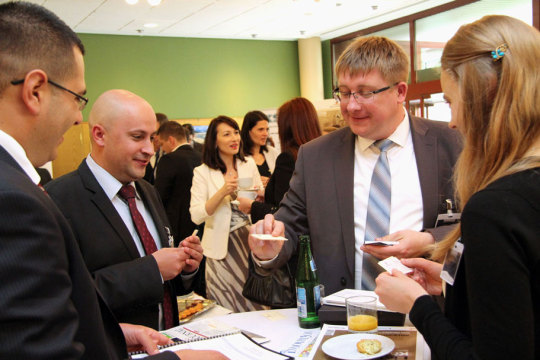
Archdach.com
Czech Republic represents practically 50% of CEE land interest in first 50% of 2019
The Czech Republic represented practically 50% of land interest in Central and Eastern Europe in the primary portion of 2019, as indicated by new figures from Cushman and Wakefield. The nation pulled in 1.9 billion euros in speculation from January to June, 45% of the 4.1 billion euros complete.
Poland saw a venture volume of about 1.3 billion euros (31 percent), trailed by Romania (410 million euros, 10 percent), Hungary (seven percent), Slovakia (five percent) and Bulgaria (two percent).
Extravagant lodgings vanquish Budapest in the following four years
In the following three years, Budapest will invite recently constructed four and five-star lodgings all over the city with in excess of 4,500 rooms. The accessible five-star facilities will extend with another 1,500 rooms in no time. Portfólio revealed that these new sumptuous lodgings would be inherent the downtown area and the most unmistakable roads of the capital however developments are relied upon to be extended external the focal point of Budapest also. An extra 1,000 rooms will be added to these inns as because of numerous worldwide gatherings and occasions numerous high renown visitors decide to go through some days in this sort of room and offices. A considerable lot of these inns will highlight exceptional hopes to make themselves more alluring for visitors. For instance, a few lodgings will be worked as shop or way of life structures, however in the Mystery Hotel Budapest, a tremendous Mona Lisa painting is hanging in one of the rooms and other DaVinci magnum opuses. A few lodgings highlight optical hallucinations giving the inclination that Aladdin's mysterious carpet is over our head.
Before long the Klotild Castle on Ferenciek Square will get its kindred structure the Matild Castle where a Turkish organization guaranteed about lavish conditions. Andrássy Avenue would not stay unblemished either as in excess of 1,000 rooms are intended to be fabricated. As indicated by the initiative of the venture, they picked the world-well known Hungarian street as rich lodgings are adequately not to draw in visitors: lavish stores, cafés, and different offices are likewise expected to make an inn's idea perfect. One more piece of this task is to change no-more extended utilized places of business into lodgings and facilities. For instance, the place of business on Boráros Square and some Váci Street ones will before long element extravagant rooms. In some different areas, rich entryways, rooms and even showers will sit tight for showing up visitors.
Almost thousand top tasks in Poland worth €120bn
Regardless of a short-enduring decline in monetary action brought about by the Covid-19 pandemic, the Polish development industry will keep on showing a critical potential for development straight up to 2025. Strikingly, the standpoint for the structural designing area has worked on contrasted and the past projections. A larger part of tasks in progress or intended to carried out are situated in the six most monetarily progressed districts, which represent just about 65% of the development market's absolute worth.
The all out worth of the 960 biggest venture projects in progress or arranged in Poland is assessed at over €120 billion, as indicated by the discoveries of the most recent report from research firm Spectis, "Development market in Poland 2020-2025 – Analysis of 16 areas".
For the requirements of the report, the Spectis group have inspected a bunch of just about 1,000 activities that will make the greatest commitment to the future financial advancements in the development advertises locally the nation over. The examination zeroed in on the best 60 tasks in every one of the voivodeships: 30 structure development ventures and 30 structural designing undertakings. The complete worth of the leader projects in progress tops €25 billion, though projects in the delicate or arranging stage are esteemed at €96 billion.
The worth of tasks canvassed in the report adds up to €127 million for each single undertaking all things considered: the normal figure for building structures remains at €70 million, and it is an incredible €184 million for structural designing constructions. The remarkable normal incentive for structural designing activities has been driven by various super ventures worth a few dozen billion zlotys. Tasks of that extent are ordinarily dependent upon a high danger of deferral. In addition, they may never be finished.
And All Other Service:-
1. architecture network dach
2. design network dach
3. architecture network berlin
4. design network berlin
5. architecture summit berlin
6. design summit berlin
7. architectural meeting berlin
8. design meeting berlin
9. one to one meeting berlin
10. one to one meeting dach
11. architectural gathering dach
12. design gathering dach
13. architect event berlin
14. architect event dach
More Information: - https://www.archdach.com/
0 notes
Link
December végén bezár a Ferenciek terén a Buddha Bar Hotel, amely az északi Klotild-palotában üzemel. Vajon mi lesz az épülettel?
10 notes
·
View notes
Photo

#budapest#ferenciek tere#matild#klotild#szerelem#photography#stevesimonjr#Analog photography#architecture#city#hungary#35 mm film#35 mm#film is not dead#35mm#35mm photography#film photography#filmisnotdead
31 notes
·
View notes
Photo

The Klotild Palace in Evening Light, with the Elizabeth-bridge in the Background - Antal Berkes.
Hungarian, 1874-1938
oil on canvas, 96 x 121 cm.
49 notes
·
View notes